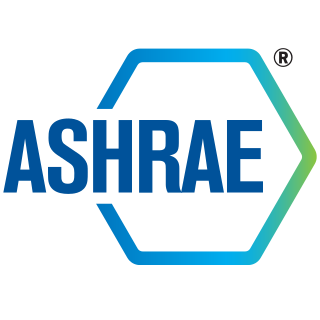The microwave auditory effect, also known as the microwave hearing effect or the Frey effect, consists of the human perception of audible clicks, buzzing, hissing or knocking induced by pulsed or modulated radio frequencies. The perceived sounds are generated directly inside the human head without the need of any receiving electronic device. The effect was first reported by persons working in the vicinity of radar transponders during World War II. In 1961, the American neuroscientist Allan H. Frey studied this phenomenon and was the first to publish information on the nature of the microwave auditory effect. The cause is thought to be thermoelastic expansion of portions of the auditory apparatus, although competing theories explain the results of holographic interferometry tests differently.
Altitude is a distance measurement, usually in the vertical or "up" direction, between a reference datum and a point or object. The exact definition and reference datum varies according to the context. Although the term altitude is commonly used to mean the height above sea level of a location, in geography the term elevation is often preferred for this usage.
In physiology, thermoception or thermoreception is the sensation and perception of temperature, or more accurately, temperature differences inferred from heat flux. It deals with a series of events and processes required for an organism to receive a temperature stimulus, convert it to a molecular signal, and recognize and characterize the signal in order to trigger an appropriate defense response.

Thermoregulation is the ability of an organism to keep its body temperature within certain boundaries, even when the surrounding temperature is very different. A thermoconforming organism, by contrast, simply adopts the surrounding temperature as its own body temperature, thus avoiding the need for internal thermoregulation. The internal thermoregulation process is one aspect of homeostasis: a state of dynamic stability in an organism's internal conditions, maintained far from thermal equilibrium with its environment. If the body is unable to maintain a normal temperature and it increases significantly above normal, a condition known as hyperthermia occurs. Humans may also experience lethal hyperthermia when the wet bulb temperature is sustained above 35 °C (95 °F) for six hours. Work in 2022 established by experiment that a wet-bulb temperature exceeding 30.55°C caused uncompensable heat stress in young, healthy adult humans. The opposite condition, when body temperature decreases below normal levels, is known as hypothermia. It results when the homeostatic control mechanisms of heat within the body malfunction, causing the body to lose heat faster than producing it. Normal body temperature is around 37°C(98.6°F), and hypothermia sets in when the core body temperature gets lower than 35 °C (95 °F). Usually caused by prolonged exposure to cold temperatures, hypothermia is usually treated by methods that attempt to raise the body temperature back to a normal range. It was not until the introduction of thermometers that any exact data on the temperature of animals could be obtained. It was then found that local differences were present, since heat production and heat loss vary considerably in different parts of the body, although the circulation of the blood tends to bring about a mean temperature of the internal parts. Hence it is important to identify the parts of the body that most closely reflect the temperature of the internal organs. Also, for such results to be comparable, the measurements must be conducted under comparable conditions. The rectum has traditionally been considered to reflect most accurately the temperature of internal parts, or in some cases of sex or species, the vagina, uterus or bladder.

Nomex is a flame-resistant meta-aramid material developed in the early 1960s by DuPont and first marketed in 1967.

Aviation medicine, also called flight medicine or aerospace medicine, is a preventive or occupational medicine in which the patients/subjects are pilots, aircrews, or astronauts. The specialty strives to treat or prevent conditions to which aircrews are particularly susceptible, applies medical knowledge to the human factors in aviation and is thus a critical component of aviation safety. A military practitioner of aviation medicine may be called a flight surgeon and a civilian practitioner is an aviation medical examiner. One of the biggest differences between the military and civilian flight doctors is the military flight surgeon's requirement to log flight hours.
Hysteresivity derives from “hysteresis”, meaning “lag”. It is the tendency to react slowly to an outside force, or to not return completely to its original state. Whereas the area within a hysteresis loop represents energy dissipated to heat and is an extensive quantity with units of energy, the hysteresivity represents the fraction of the elastic energy that is lost to heat, and is an intensive property that is dimensionless.
Bioelectromagnetics, also known as bioelectromagnetism, is the study of the interaction between electromagnetic fields and biological entities. Areas of study include electromagnetic fields produced by living cells, tissues or organisms, the effects of man-made sources of electromagnetic fields like mobile phones, and the application of electromagnetic radiation toward therapies for the treatment of various conditions.
Heat therapy, also called thermotherapy, is the use of heat in therapy, such as for pain relief and health. It can take the form of a hot cloth, hot water bottle, ultrasound, heating pad, hydrocollator packs, whirlpool baths, cordless FIR heat therapy wraps, and others. It can be beneficial to those with arthritis and stiff muscles and injuries to the deep tissue of the skin. Heat may be an effective self-care treatment for conditions like rheumatoid arthritis.

The U.S. Army Research Institute of Environmental Medicine (USARIEM) is the U.S Army’s main institution and facility for military environmental medicine and exercise physiology research. It is located at Natick, Massachusetts, within the U.S. Army Soldier Systems Center (SSC) installation, but is a subordinate lab of the U.S. Army Medical Research and Materiel Command (USAMRMC), headquartered at Fort Detrick, Maryland, USA.

Thermal comfort is the condition of mind that expresses satisfaction with the thermal environment and is assessed by subjective evaluation. The human body can be viewed as a heat engine where food is the input energy. The human body will release excess heat into the environment, so the body can continue to operate. The heat transfer is proportional to temperature difference. In cold environments, the body loses more heat to the environment and in hot environments the body does not release enough heat. Both the hot and cold scenarios lead to discomfort. Maintaining this standard of thermal comfort for occupants of buildings or other enclosures is one of the important goals of HVAC design engineers.
Photothermal microspectroscopy (PTMS), alternatively known as photothermal temperature fluctuation (PTTF), is derived from two parent instrumental techniques: infrared spectroscopy and atomic force microscopy (AFM). In one particular type of AFM, known as scanning thermal microscopy (SThM), the imaging probe is a sub-miniature temperature sensor, which may be a thermocouple or a resistance thermometer. This same type of detector is employed in a PTMS instrument, enabling it to provide AFM/SThM images: However, the chief additional use of PTMS is to yield infrared spectra from sample regions below a micrometer, as outlined below.

The Saharan silver ant is a species of insect that lives in the Sahara Desert. It is the fastest of the world’s 12,000 known ant species, clocking a velocity of 855 millimetres per second. It can travel a length 108 times its own body length per second, a feat topped only by two other creatures, the Australian tiger beetle Cicindela eburneola and the California coastal mite Paratarsotomus macropalpis. This is nearly the walking pace of a human being, and compared to its body size would correspond to a speed of about 200 m/s (720 km/h) for a 180 cm (6 ft) tall human runner.
Hydrogen narcosis is the psychotropic state induced by breathing hydrogen at high pressures. Hydrogen narcosis produces symptoms such as hallucinations, disorientation, and confusion, which are similar to hallucinogenic drugs. It can be experienced by deep-sea divers who dive to 300 m (1,000 ft) below sea level breathing hydrogen mixtures. However, hydrogen has far less narcotic effect than nitrogen and is very rarely used in diving. In tests of the effect of hydrogen narcosis, where divers dived to 500 m (1,600 ft) with a hydrogen–helium–oxygen (hydreliox) mixture containing 49% hydrogen, it was found that while the narcotic effect of hydrogen was detectable, the neurological symptoms of high-pressure nervous syndrome were only moderate.
Endothermic organisms known as homeotherms maintain internal temperatures with minimal metabolic regulation within a range of ambient temperatures called the thermal neutral zone (TNZ). Within the TNZ the basal rate of heat production is equal to the rate of heat loss to the environment. Homeothermic organisms adjust to the temperatures within the TNZ through different responses requiring little energy.
Afterdrop is a continued cooling of a patient's core temperature during the initial stages of rewarming from hypothermia.

Skin temperature is the temperature of the outermost surface of the body. Normal human skin temperature on the trunk of the body varies between 33.5 and 36.9 °C, though the skin's temperature is lower over protruding parts, like the nose, and higher over muscles and active organs. Recording skin temperature presents extensive difficulties. Although it is not a clear indicator of internal body temperature, skin temperature is significant in assessing the healthy function of skin. Some experts believe the physiological significance of skin temperature has been overlooked, because clinical analysis has favoured measuring temperatures of the mouth, armpit, and/or rectum. Temperatures of these parts typically are consistent with internal body temperature.
Palm cooling is a type of recovery intervention that involves cooling the palm of the hand during rest periods between bouts of strenuous physical activity. The palm cooling modality can be used to moderate increases in core temperature resulting from the level of physical activity, the wearing of protective clothing or a combination of both, for example in the activities of military personnel or firefighters.

Ella B. Tyree was an American medical researcher. She worked in the mid-twentieth century investigating effects of radiation poisoning in animals and potential treatments.

Peter Kohl FAHA FHRS FTPS FIUPS is a scientist specializing in integrative cardiac research. He studies heterocellular electrophysiological interactions in cardiac tissue, myocardial structure-function relationships using 'wet' and 'dry' lab models, and mechano-electrical autoregulation of the heart.









